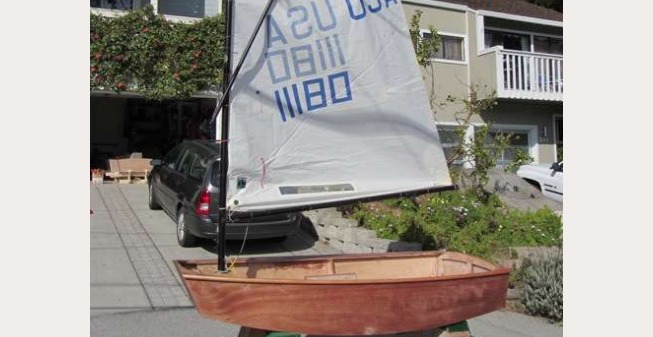Make a sailboat
Make a simple sailboat using a cork, toothpick mast, paper sail, and tape, then test and adjust it in a tub or pool.



Step-by-step guide to make a sailboat
Learn How to SAIL SOLO: Beginner Single Handing a Sailboat
Step 1
Gather all the materials listed and bring them to a clear work surface.
Step 2
Cut the paper into a small rectangle about the size of your palm to make the sail.
Step 3
Make a small pilot hole in the center top of the cork using the tip of a pencil or the tip of the scissors with an adult helping.
Step 4
Push the toothpick straight into the pilot hole until it stands upright in the cork to form the mast.
Step 5
Hold the paper sail against the toothpick and tape the bottom edge of the sail to the middle of the toothpick so the sail is upright.
Step 6
Add one small strip of tape around the base of the toothpick and cork if the mast feels loose.
Step 7
Gently place your cork sailboat into the bowl or tub of water so it floats.
Step 8
Blow gently on the sail to see how the boat moves across the water.
Step 9
If the boat tips to one side add a tiny piece of tape to the opposite side of the cork as a weight to balance it.
Step 10
Test the boat again in the water and repeat the balancing step until it sails steadily.
Step 11
Take a photo or write about your finished sailboat and share your creation on DIY.org
Final steps
You're almost there! Complete all the steps, bring your creation to life, post it, and conquer the challenge!


Help!?
What can I use if I can't find a cork or toothpicks?
If you don't have a cork, use a small block of craft foam, a folded kitchen sponge, or a tightly crumpled piece of aluminum foil as the hull and insert a toothpick alternative like a trimmed wooden skewer or coffee stirrer where the instructions call for the pilot hole.
My mast keeps wobbling or the boat tips over—how do I fix it?
If the mast is loose or the boat tips, follow the step to add one small strip of tape around the base of the toothpick and cork for stability and use a tiny piece of tape on the opposite side of the cork as a weight, or make a slightly deeper pilot hole with the pencil tip for a snugger fit.
How can I adapt the activity for younger or older children?
For younger kids, pre-cut the palm-sized paper sail and have an adult make the pilot hole and insert the toothpick, while older children can experiment with different sail shapes, add a keel weight during the balancing step, or measure how far the boat sails when you blow on the sail.
What are some ways to extend or personalize the sailboat project?
To personalize and extend the activity, decorate or waterproof the cork with washable paint or tape before assembling, add a second sail or a small cardboard rudder taped to the toothpick, and then take photos or write about the finished sailboat to share on DIY.org as suggested.
Watch videos on how to make a sailboat
How To Build a Small Wooden Boat From Scratch (with @ChesapeakeLightCraftBoats)
Facts about buoyancy and simple boat design
⛵ Sailboats have been used for over 5,000 years — ancient people sailed rivers and seas to trade and explore.
🦷 A typical wooden toothpick is about 2.5 inches (≈6.4 cm) long — just the right size for a mast on a cork boat.
🔬 Buoyancy (Archimedes' principle) means a boat floats when it pushes away enough water to match its weight — move the weight and the boat will tip or rise.
🐚 Cork floats because it's made of tiny air-filled cells, which makes it lighter than water and perfect for tiny boats.
📄 Paper was developed in China around 2,000 years ago and is still one of the easiest materials to shape into sails.
How do I make and test a simple cork sailboat?
What materials do I need to build a cork and paper sailboat?
What ages is this cork sailboat activity suitable for?
What safety tips should I follow when making and testing a cork sailboat?


One subscription, many ways to play and learn.
Only $6.99 after trial. No credit card required



